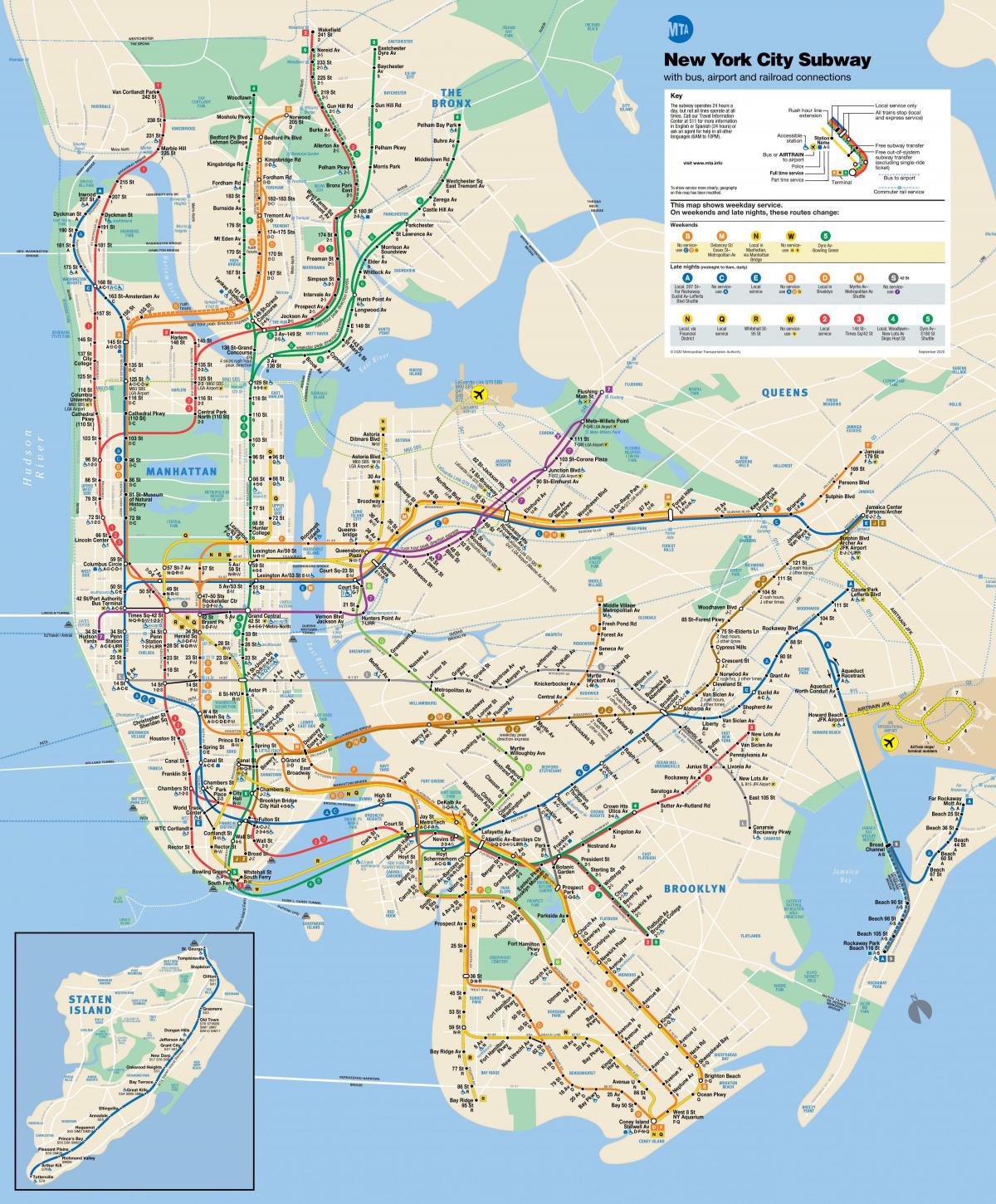search
MTA map
MTA line map. MTA map (New York - USA) to print. MTA map (New York - USA) to download. The colored subway lines on the MTA map indicate related trains that share a portion of common track. Here are the main MTA lines: As you can see, each MTA line has a name and a specific color. The 8th Ave line for instance is always blue, while the Broadway - 7th Ave line is always red. Do not worry about the line names too much. Even locals often do not know the official name of a given line.
Within the "blue" 8th Ave line there are three services which are A, C and E. These three MTA services are grouped into this "blue" 8th Ave line, because they share a common tunnel/avenue/street at some point on their journey (8th Ave as its shown in MTA map). However, these three trains have different starting and/or ending stations. Similarly, the 1, 2 and 3 services on the "red" Broadway-7th Ave line run along Broadway and 7th Ave, but they do start and end at different MTA stations.
It is confusing to say that you are taking the "blue" 8th Ave line, because the three MTA services within them (A, C and E) go to entirely different endpoints and even stop at different stations on the same shared path. This is the reason why locals do not refer to MTA lines by their names or even color. People never say, "Take the green" or "Take the red line"; Instead they say, "Take the 4 train" or "Take the 2 train".
Express MTA trains skip certain stations for faster service, while local trains stop at every station along their path. From the above table, you can see that the 2 and 3 trains are generally express trains, but the 1 train is a local train as its mentioned in MTA map. Similarly, on the 8th Ave line, the A train will generally run express while the C train will always run local.
The transition from MTA express to local service usually occurs when train services split from their shared portion of the track. For instance, the 1, 2 and 3 trains share a common track between 96th St station uptown and Chamber St. downtown as you can see in the MTA map. Between those two stations, the 2 and 3 trains run express and will skip certain stations. However, right after Chamber St, where the 2 and 3 trains split from the 1 train, they become local trains and will stop at every stop thereafter.


